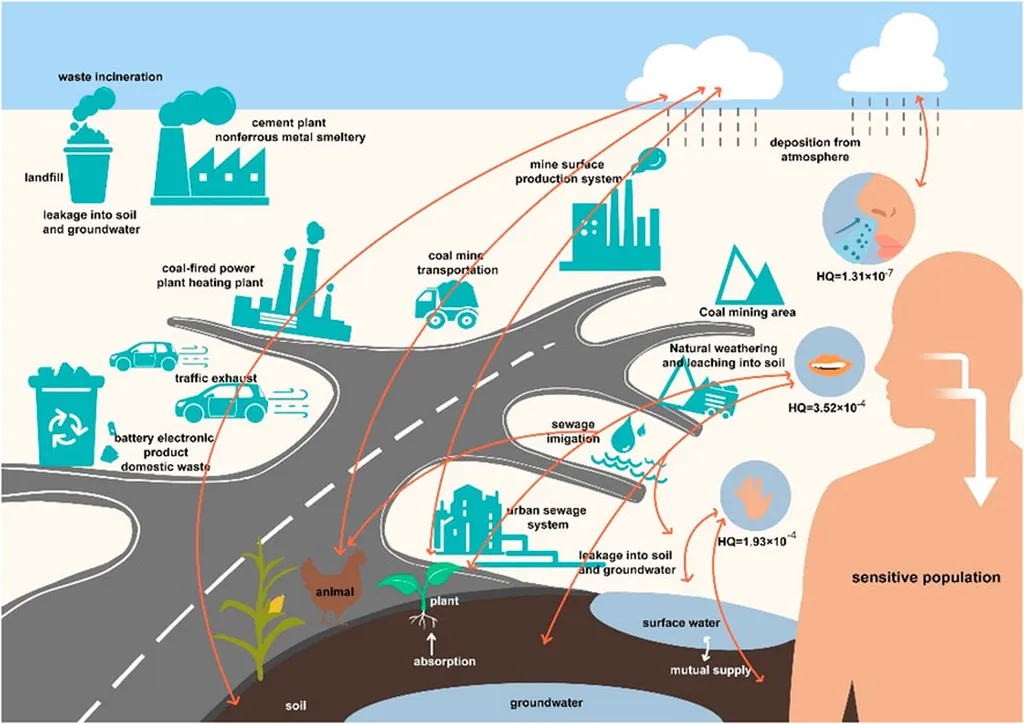In the heart of China’s Yunnan province, a groundbreaking study led by Lixin Li from the Yunnan Key Laboratory of Plateau Wetland Conservation, Restoration and Ecological Services is reshaping our understanding of soil mercury (Hg) pollution and its health risks. The research, published in the Journal of Engineering Sciences, challenges conventional soil quality standards and offers a more nuanced approach to assessing and remediating mercury contamination.
Mercury, a potent neurotoxin, has long been a concern in soil pollution. Current standards primarily focus on total mercury concentration, often leading to an overestimation of health risks. Li’s study reveals that the spatial variation of soil mercury content in China is substantial, with coastal areas showing higher concentrations due to industrial activities. “The spatial variation of soil Hg content in China is large, and the soil Hg content in provinces, municipalities, and autonomous regions is closely related to Hg emissions from industrial and mining atmospheres,” Li explains.
The study delves into the migration and transformation mechanisms of mercury in soil, highlighting its toxic effects on human health. Mercury exposure can lead to oxidative stress, cell death, and severe impacts on the nervous and renal systems. “Cells are prone to death under Hg exposure due to the production of reactive oxygen species, inhibition of antioxidant stress proteins, and increased oxidative stress,” Li notes. The research also underscores the vulnerability of developing embryos and children to mercury exposure, which can result in lifelong nerve damage.
Li’s team reviewed various in vivo and in vitro models used for mercury health risk assessment, each with its own advantages and limitations. They propose a refined approach that considers different exposure pathways and individual differences, aiming to make health risk assessments more accurate and realistic.
For the energy sector, this research holds significant implications. Mercury emissions from coal-fired power plants and other industrial processes contribute to soil contamination. The study’s findings could guide more targeted and cost-effective remediation strategies, reducing the environmental and health impacts of mercury pollution.
Looking ahead, Li suggests that future studies could utilize organoid models to investigate the toxicity of soil mercury pollution more precisely. This advanced approach could pave the way for a differentiated assessment model, further enhancing the accuracy of health risk evaluations.
As the world grapples with the challenges of environmental pollution, Li’s research offers a beacon of hope. By refining our understanding of mercury’s health risks and developing more effective remediation strategies, we can better protect human health and the environment. The study’s insights could shape future policies and practices, ensuring a safer and healthier world for all.

